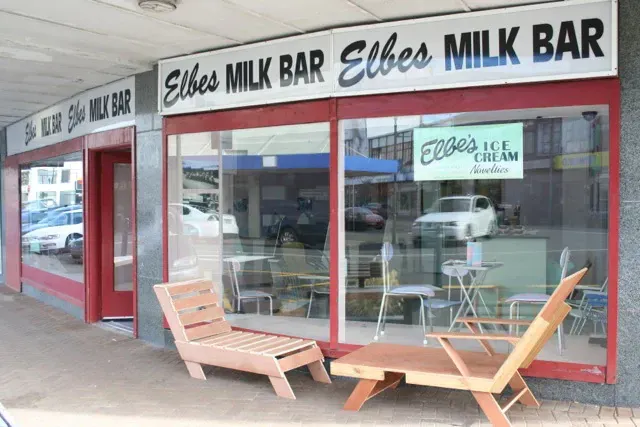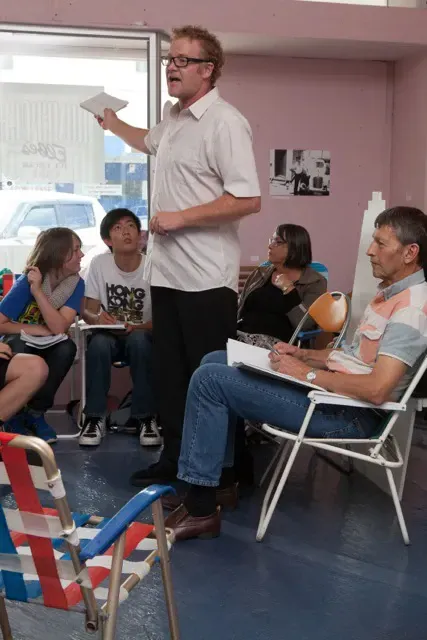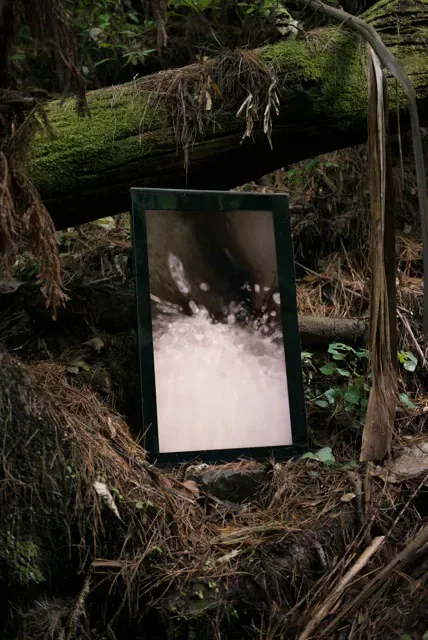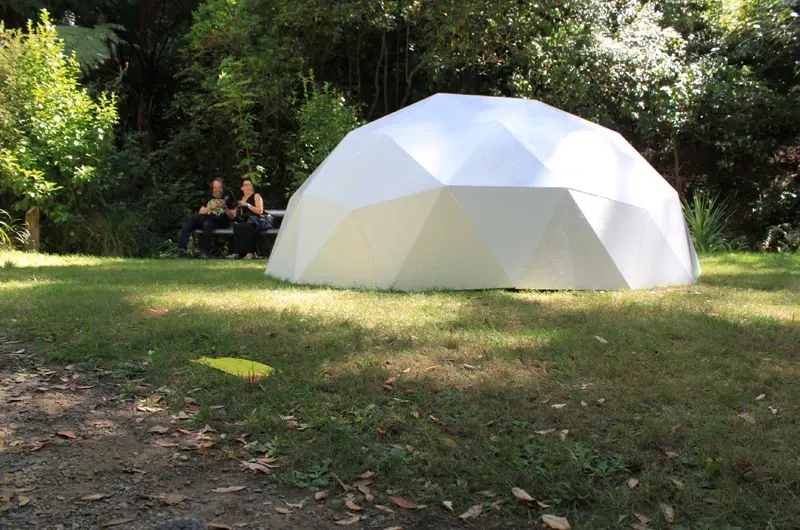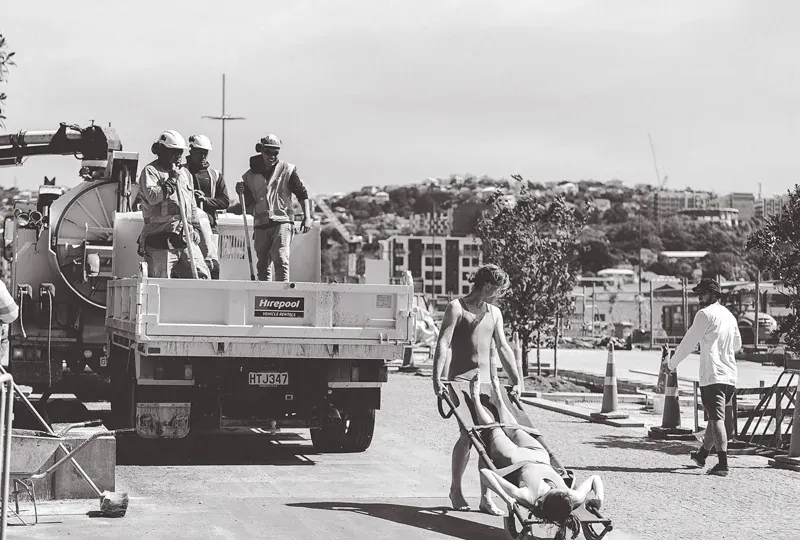Finding common ground
Written by
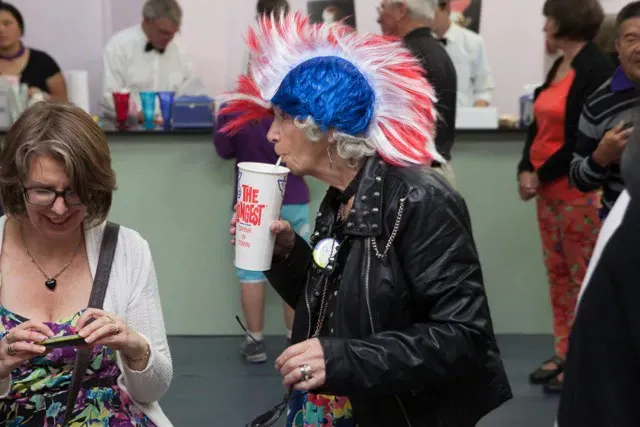
A growth in temporary art projects that respond to locations is tapping the zeitgeist, writes Mark Amery.
* * *
As we find our cities stocked full of dating permanent art objects. As people increasingly start to question just how many more things they really want or need. As we turn to how we can connect in different ways with each other, and better value the environment around us. This will be the time remembered for when temporary public art projects started to be considered by the public at large as not just some experimental or jokey adjunct to the core practice of exhibiting in white rooms but, rather, as some of the key work of our times.
Of course significant projects have been occurring for years. It’s just now the zeitgeist is here: expect to see projects good, bad and indifferent. Judge them on their effect, opening up of their location and level of engagement rather than their novelty.
In Wellington summer lingers on and temporary socially engaged projects are everywhere. Where once I used to decry their absence, increasingly they’re an art calling card for the city. As I write Wellington Sculpture Trust are filling 22 parking spaces around the city with temporary art parks for PARKing Day (Wednesday 11March). Saturday 14 March you can catch a free ferry to circle the tiny Mokopuna Island (just off better known Matiu Somes) where Massey grad Mike Ting is conducting a performance. We know little, other than that a cave on Mokopuna was legendary in 1904 for being the home for three months (and the place of death) of Kim Lee, exiled as a leper. Ting’s blog also makes it clear the work also seeks to discuss a society today that can isolate and make vulnerable the individual in new ways. The negotiation by Ting with the ferry company of a free ride is a nice first step.
Enjoy Gallery have gone AWOL from their room in Cuba Street to present The Levelling of Puke Ahu, a small suite of performances and installations surrounding the Wellington cenotaph and old national museum and gallery (Saturdays 14 and 21 March). This is the location of the new National War Memorial Park and Massey University, a potential new war museum, a former military barracks, prison and a leveled pa - quite the contested site. Enjoy worked with history previously with Kah Bee Chow’s One Day Sculpture work Golden Slumbers in the old Chinatown of Haining Street way back in 2008.
Common Ground

Tape Art mural rip down Sat 7 Mar 2015, external wall, The Dowse Art Museum. Photo / Dionne Ward
The first week of March saw an inaugural Hutt public art festival, Common Ground. In public art terms it is rather neatly the antithesis of Shapeshifter, the biennial festival exhibition that it’s programmed to alternate with. While the popular Shapeshifter crowds a public park with sculpture for sale with no relationship to its site, Common Ground focused on temporary work that required participation, and is still growing a public.
I was part of a selection panel and was proud of what it modestly managed in breadth. This ranged from a strong set of family friendly projects like Barbarian Productions Dress Up Jam, Tape Art and Alien Junk Monsters, to the more pointed political actions of Jay Hutchinson’s 24 Hour Sweat Shop, replicating conditions for some clothing workers overseas, and Lana Lopesi’s A’Oga Hutt.
Lopesi’s was a space designed to open out ideas of what represents Pacific culture in the Hutt, introducing its revolutionary history and contemporary art practice through conversation, poster making and presentation of video and performance work. I only got to see Lopesi briefly at the beginning of the project, so I can’t report on its reception, but the weekend vacancy of the Lower Hutt high street only served to highlight the out of the box bravery of the work and the challenge it laid out to make more visible here a contemporary Pacific perspective.
A real ground breaker to change attitudes would be a project like A’oga Hutt having the time to create a touch of the community stir with Pacific Island youth and a wider public as Elbe’s Milk Bar. Tim Barlow’s recreation with young people of this much loved Lower Hutt institution of the 50s and 60s hit a big popular local nerve.
Back in 1956 teenage behaviour at Elbe’s Milk Bar was the catalyst for the Mazengrab ‘moral panic’ enquiry into youth culture. I wandered in just after a youth debate on a Saturday afternoon for an ice cream sundae. The bar was full of a rare mix of teenagers, families and the elderly (reliving their youth), while the school students running things behind the counter did the YMCA dance to the Village People on the jukebox. Rather than just a nostalgia fest, through action Barlow’s project seemed to be deftly getting the public mixing and thinking about societal changes, our attitude to youth and how we realise their potential.
Upstream

Amy and Natalie’s toxically-bright Kingdom Fungi.
Common Ground overlapped with another inaugural public art platform that looks likely to continue, Upstream an art trail held for four days in Brooklyn’s Central Park. Organised by Friends of Central Park, a great strength of this project was its meeting of community needs and contemporary art to reasonably high professional standards. Set in a gully, the park is deserving of wider attention, which this project with its high public attendance provided.
With the art trail well plotted to follow the path of the Moturoa Stream up the valley, the need to work together to better care for our urban waterways and its surrounding environ was a clear inspiration for much of the work. Such an inner city stream not in pipes is rare. The theme of Shelter had been laid down for the artists to respond to. Many didn’t, and it really wasn’t needed.
Rather the best works were in active conversation with their environment and the need for its care. The focus was on emerging artists, with some accompanying School and Friends of the Park collaborative projects, and it was clear many artists had taken the time in development to engage with the site.
Too many sculpture parks simply use the landscape as a picturesque frame for the imposition of sculpture. It can appear like some alien visitation. This was something Rebecca Pilcher’s white geodesic dome work, providing darkened social shelter for the public in a clearing, theatrically played up to. A retro-futuristic cinema prop to inhabit, it gleefully mixed into the park the humanistic utopian ideals of designer Buckminster Fuller, getting us asking “What exactly are we sheltering from?”
There was an unevenness in quality of work, and the occasional placement that interfered with the environment rather than opened it out. David Brown’s closure of a stairway with a string sculpture commenting on battery hen farming, for instance, worked against the needs of park users. And I could have done without yet more woolen tree cosies.
Yet for an inaugural community event Upstream was impressive. Some strong work made it for me. Amy and Natalie’s toxically-bright ‘Kingdom Fungi’, popping up on banks and branches along the path were experiments with variable success, but at their best had a tension in appearance between manufactured refuse, handmade decoration and natural forms.
Kemi Niko and Co have this summer already won many people over to the power of temporary work with their Miniature Hikes project (which I wrote on here). Their work ‘In Memory of a Tree’ for Upstream provided another effective, if more challenging way to better appreciate the park. Following a series of increasingly idiosyncratic orange tramping markers, they sent walkers off on far pathways in the park, and then off the beaten track itself, testing them to get lost in the woods and find themselves again. I made it to a stick dangling from a rope and pulley, which led me to some bells in another tree. There my trail went cold, but I still enjoyed the playful orienteering challenge of the work.
By rights a video work in bush should feel an intrusion, but Johanna Mechen’s ‘Moturoa Stream - Long Island in the Stream’ speaks in both placement and imagery exquisitely and sensitively to the stream it sits alongside. Echoing the bubbling vitality of running water, it is itself a stream of beautifully framed moments of movement in the waterway, above and below the surface. There’s a strong, gentle strength in the film making as a performance working to be in balance with a natural flow. The water as a lens churns muddy and then clear, small fish dart in and out of frame and nibble at a still open hand in the water.
I’m reminded of another temporary public work across town: a curtain of water collected from the Kumutoto Stream that is falling in a vacant shop window up the top of Woodward Street. Kedron Parker and Bruce McNaughton’s The Wet Index (images here) elegantly remind us that what we treat as storm water below our feet in a pipe, is in fact a stream, which is further up the hill open to nature, long precious to Maori and a passageway for fish to this very day.
